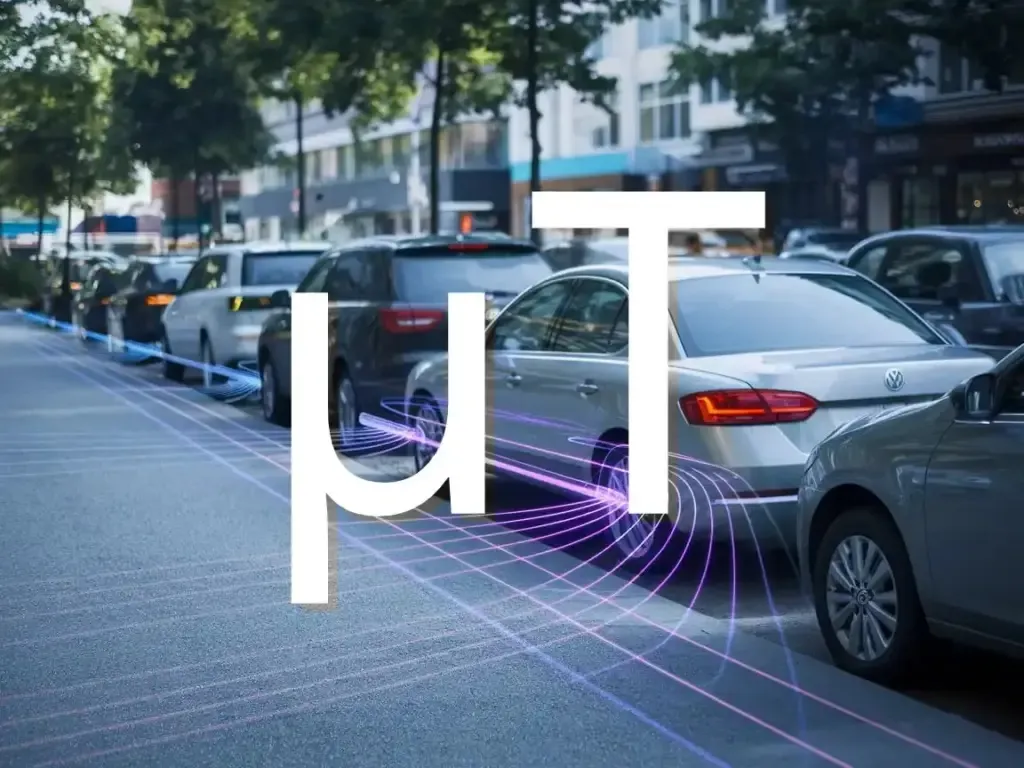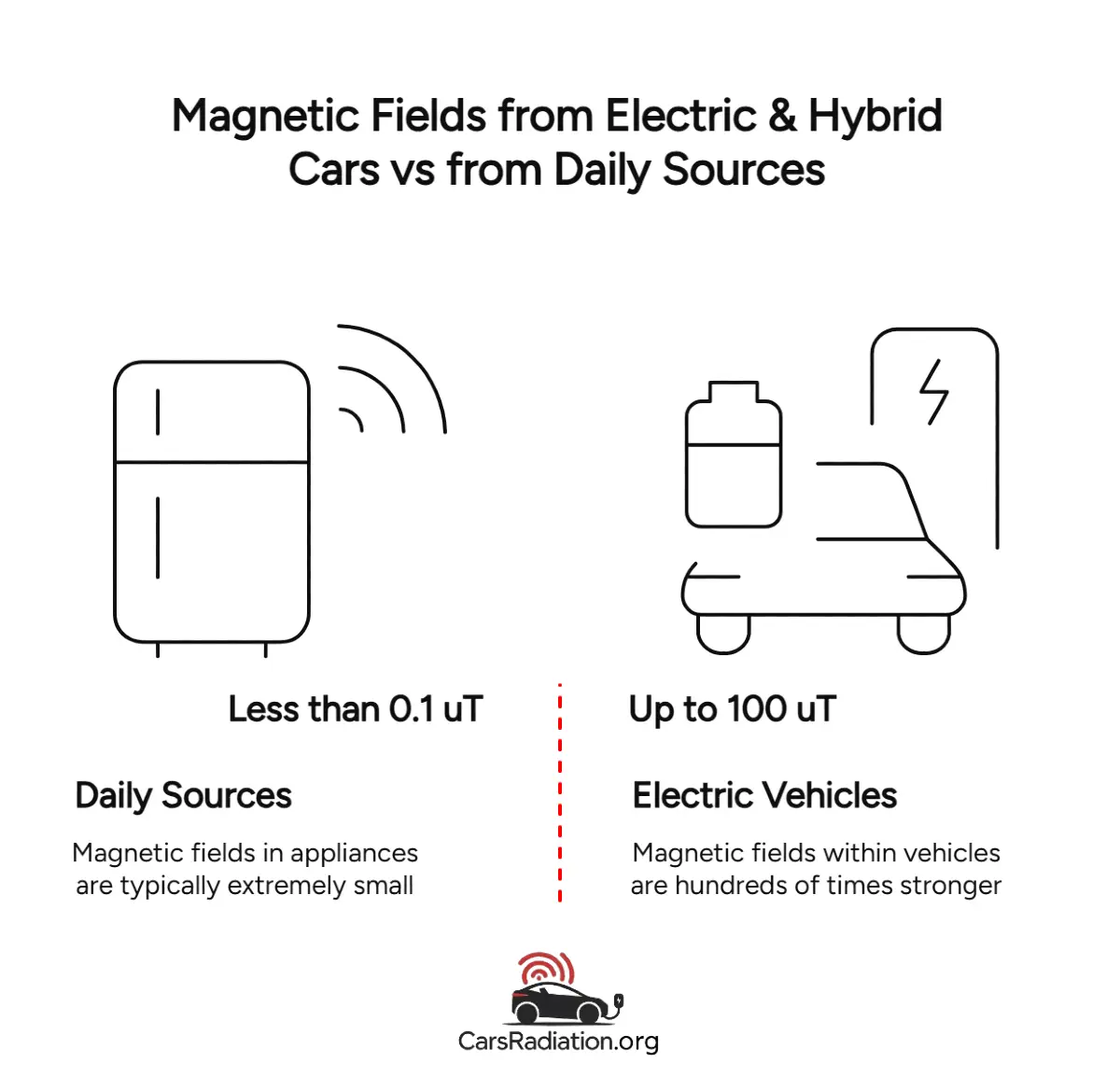How Do Magnetic Fields from Electric and Hybrid Cars Compare to Those From Daily Sources?

Electric and hybrid vehicles are becoming more common due to their clean energy benefits, but many people are now starting to ask about something less visible: the magnetic fields they generate.
Magnetic fields are created whenever electric current flows, whether from power lines, appliances, or your car’s motor. These fields are a natural part of modern life, but not all sources are equal.
So how do the fields inside these cars stack up against the ones we’re exposed to every day?
Here’s a clearer look.
Where Are Magnetic Fields Found?
Magnetic fields exist almost everywhere around us. They come from many different sources, such as:
- The Earth’s natural magnetic field
- Electrical wiring inside buildings
- Household appliances like refrigerators
- Older electronic devices like CRT televisions
Most of these magnetic fields are very weak, so weak that we don’t feel or notice them. For example, in a typical home, magnetic field levels are usually below 0.1 microteslas (µT).

For context, a microtesla is a unit that tells us how strong a magnetic field is. You can think of it as a way to measure the invisible force that surrounds certain objects and areas.
Magnetic Fields in Electric and Hybrid Vehicles: What’s the Difference?
Electric and hybrid vehicles rely on large batteries and electric motors to operate. When these systems run, they produce magnetic fields, sometimes much stronger than what people usually encounter at home or work.
Studies show that magnetic field levels inside these vehicles, especially in the passenger seats, can go beyond 20 microteslas. That’s significantly higher than the levels found near common household appliances.
For comparison:
| Everyday Items | A fridge or microwave typically gives off magnetic fields that are only a small fraction of a microtesla. |
| Electric and Hybrid Cars | In some models, the magnetic field inside the cabin can be hundreds of times higher. |
Are These Magnetic Fields Harmful?
This is a question best addressed by reviewing the current scientific consensus. According to the World Health Organization (WHO), long-term exposure to magnetic fields above 0.4 microtesla (µT) has been associated with a possible increase in cancer risk specifically, childhood leukemia. This classification is based on epidemiological studies and is documented in sources such as the National Library of Medicine. While the link is not definitively proven, the observed correlation is strong enough to warrant attention.
In line with this, the International Commission on Non-Ionizing Radiation Protection (ICNIRP) has issued guidelines that recommend limiting prolonged exposure to such fields. These recommendations are not meant to raise alarm, but rather to promote cautious, evidence-informed practices to reduce unnecessary health risks.

Applying the Numbers to Real-Life Situations
Hearing that magnetic fields in electric cars can reach 20 µT may sound alarming, but what does that actually mean in everyday terms? One way to understand it is by comparing it to sound levels:
- The magnetic field inside most homes is typically less than 0.1 µT. This is like sitting in a quiet room: present, but barely noticeable.
- An electric car cabin, where fields can reach several µT or more, is more like a busy café: still manageable, but there’s a clear increase in intensity.
- Standing next to a concert loudspeaker (overwhelming and not something you’d tolerate for long) is a good analogy for strong magnetic fields around 20 µT or higher. Prolonged exposure at that level is not advisable
The Need to Make Realistic Adjustments
Electric and hybrid cars offer clear environmental benefits. But it’s also important to ask: are there trade-offs? One area that deserves attention is exposure to magnetic fields, which tends to be higher in these vehicles. Adjusting how we interact with the car can make a difference.
Magnetic fields are strongest near electrical parts, especially the battery and motor. That means the closer you sit to those parts, the more exposure you may get. A practical example: passengers sitting in the back seat are typically further from the powertrain and therefore may experience lower exposure levels.
Technology also plays a role. Some solutions are now available that can reduce exposure directly. For example, SafeFields uses active magnetic field cancellation to suppress unwanted ELF (extremely low-frequency) magnetic fields. This kind of technology provides an added layer of protection for vehicle occupants.
What Comes Next
As electric and hybrid cars continue to grow in popularity, knowing how they affect us becomes more important.
Would you like to learn more about how magnetic fields work? Or how car companies are starting to deal with these concerns? The bigger question is this: how do you balance the clean energy benefits of EVs with the need to protect your health?

